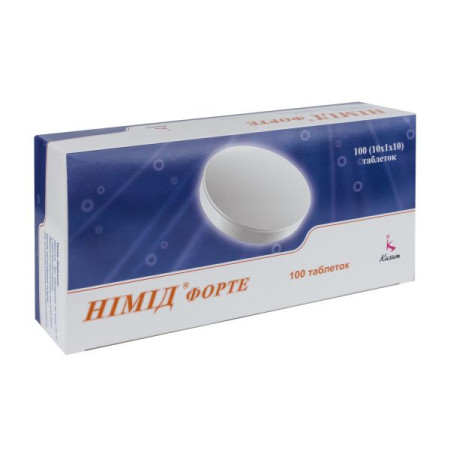Hypnos tablets 15 mg No. 10

Instructions for use Hypnos tablets 15 mg No. 10
Composition
active ingredient: doxylamine;
1 film-coated tablet contains doxylamine succinate 15 mg;
excipients: lactose monohydrate, microcrystalline cellulose, croscarmellose sodium, magnesium stearate, Opadry F85 White.
Dosage form
Film-coated tablets.
Main physicochemical properties: oval-shaped tablets, coated with a white or almost white shell, with a two-sided score for separation.
Pharmacotherapeutic group
Antihistamines for systemic use. Doxylamine. ATX code R06A A09.
Other hypnotics and sedatives. ATX code N05C M.
Pharmacological properties
Pharmacodynamics
Hypnos® is a hypnotic drug of the ethanolamine class from the group of histamine H1-receptor blockers, which has a sedative and M-cholinoblocking effect. It reduces the time to fall asleep, increases the duration and quality of sleep.
Pharmacokinetics
Cmax in blood plasma is reached 2 hours after taking the tablets. The average half-life from blood plasma is on average 10 hours.
Doxylamine succinate undergoes biotransformation in the liver. Doxylamine succinate is partially metabolized in the liver by demethylation and N-acetylation. The half-life may be significantly increased in elderly patients or in patients with renal or hepatic insufficiency. The various metabolites formed during the breakdown of the molecule are not quantitatively significant, since 60% of the administered dose is found in the urine as unchanged doxylamine.
Indication
Intermittent and transient insomnia in adults.
Contraindication
Hypersensitivity to any of the components of the drug or to other antihistamine drugs; angle-closure glaucoma in the patient's history or in the family history; difficulty urinating (urethra and prostate disease).
Interaction with other medicinal products and other types of interactions
Alcohol enhances the sedative effect of most H1 antihistamines. Alcoholic beverages and medications containing ethanol should be avoided.
The following combinations of the drug Hypnos® should be taken into account:
atropine and atropine-like drugs (imipramine antidepressants, anticholinergic antiparkinsonian drugs, atropine antispasmodics, disopyramide, phenothiazine neuroleptics) due to the occurrence of side effects such as urinary retention, constipation, dry mouth; other antidepressants that affect the central nervous system (morphine derivatives (painkillers used for cough treatment and substitution therapy), neuroleptics; barbiturates, benzodiazepines; anxiolytics, except benzodiazepines; sedative antidepressants (amitriptyline, doxepin, mianserin, mirtazapine, trimipramine); sedative H1-antihistamines; centrally acting antihypertensives; others: baclofen, pizotifen, thalidomide) due to increased inhibition.
Application features
Insomnia can have various causes that do not necessarily require medication, so it is recommended to consult a doctor before starting to use the medication.
Like all hypnotics or sedatives, doxylamine succinate may exacerbate sleep apnea syndrome (increased number and duration of breathing stops).
H1-antihistamines should be used with caution in elderly patients due to the risk of dizziness, which may increase the risk of falls (for example, when people get up at night) with consequences that are often serious in this category of patients.
To prevent drowsiness during the day, it is necessary to remember that the duration of sleep after using the drug should be at least 7 hours.
Alcohol should be avoided while using the medicine.
Important information about excipients.
Since the medicinal product contains lactose, patients with rare hereditary forms of galactose intolerance, the Lapp lactase deficiency or glucose-galactose malabsorption should not take it.
The medicine contains sodium, so patients on a controlled sodium diet should be careful when using it.
Ability to influence reaction speed when driving vehicles or other mechanisms
Hypnos® affects the speed of psychomotor reactions (risk of daytime drowsiness), therefore you should refrain from driving or operating other mechanisms.
Use during pregnancy or breastfeeding
The drug is contraindicated during pregnancy or breastfeeding.
Method of administration and doses
For oral use. Take 15–30 minutes before bedtime.
The recommended dose is 7.5–15 mg per day (½–1 tablet per day). If necessary, the dose can be increased to 30 mg per day (2 tablets per day).
A dose reduction is recommended for elderly patients and patients with renal or hepatic insufficiency.
If insomnia persists for longer than 5 days, you should consult a doctor regarding the appropriateness of further use of the drug.
Children
The medicine should not be used in children under 18 years of age.
Overdose
Symptoms.
The first signs of acute poisoning are drowsiness and manifestations of anticholinergic effects: agitation, dilated pupils, paralysis of accommodation, dry mouth, flushing of the face and neck, hyperthermia, sinus tachycardia. Delirium, hallucinations and athetoid movements are more common in children, sometimes they are precursors of seizures - rare complications of severe poisoning. Even if seizures do not occur, acute doxylamine poisoning sometimes causes rhabdomyolysis, which can be complicated by acute renal failure. This muscle disorder is common, requiring systematic screening by measuring the activity of creatine phosphokinase.
Treatment.
Administration of activated charcoal (50 g for adults and 1 g/kg for children), symptomatic treatment if necessary. Anticonvulsants and artificial ventilation are prescribed as indicated.
Adverse reactions
In the morning after taking the drug in the evening, slowed reactions and dizziness may occur, so to prevent falling, sudden movements should be avoided. Rarely, anticholinergic effects develop: constipation, dry mouth, accommodation disorders, palpitations, urinary retention.
Daytime drowsiness: if this effect develops, the dose should be reduced.
Allergic reactions are possible, including skin rashes and itching.
Reporting of suspected adverse reactions.
Reporting suspected adverse reactions after the marketing authorisation of a medicinal product is an important procedure. This allows for continued monitoring of the benefit/risk balance of the medicinal product concerned. Healthcare professionals should report any suspected adverse reactions via the national reporting system.
Expiration date
1.5 years.
Storage conditions
Store in original packaging at a temperature not exceeding 25 ° C. Keep out of the reach of children.
Packaging
10 tablets in a contour blister pack; 1 or 2 contour blister packs in a pack.
Vacation category
Film-coated tablets No. 10 (10x1) – without a prescription.
Film-coated tablets No. 20 (10x2) – by prescription.
Producer
PrJSC "Pharmaceutical Company "Darnitsa".
Location of the manufacturer and its business address
Ukraine, 02093, Kyiv, Boryspilska St., 13.
There are no reviews for this product.
There are no reviews for this product, be the first to leave your review.
No questions about this product, be the first and ask your question.













